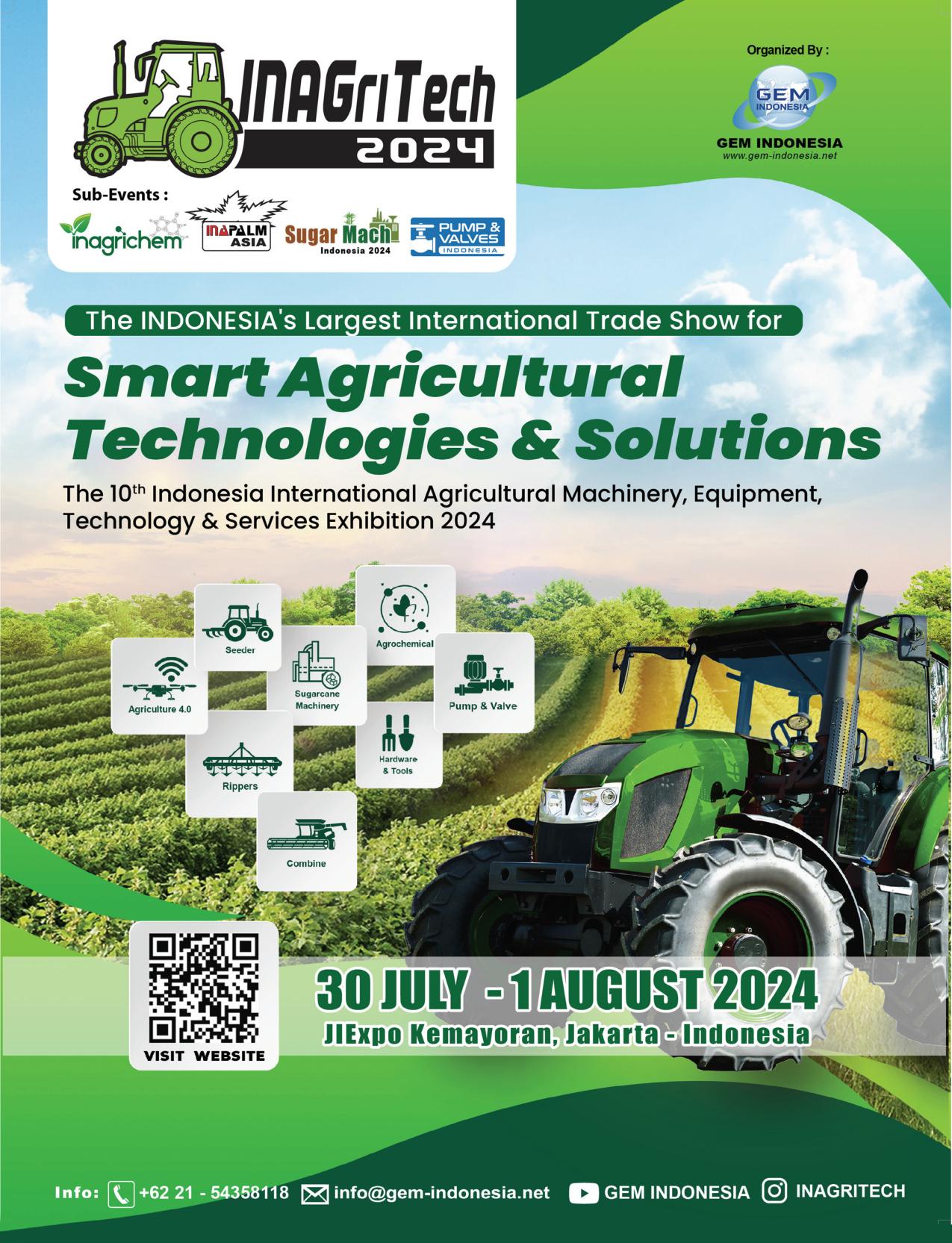Streamlining farming practices with agritech
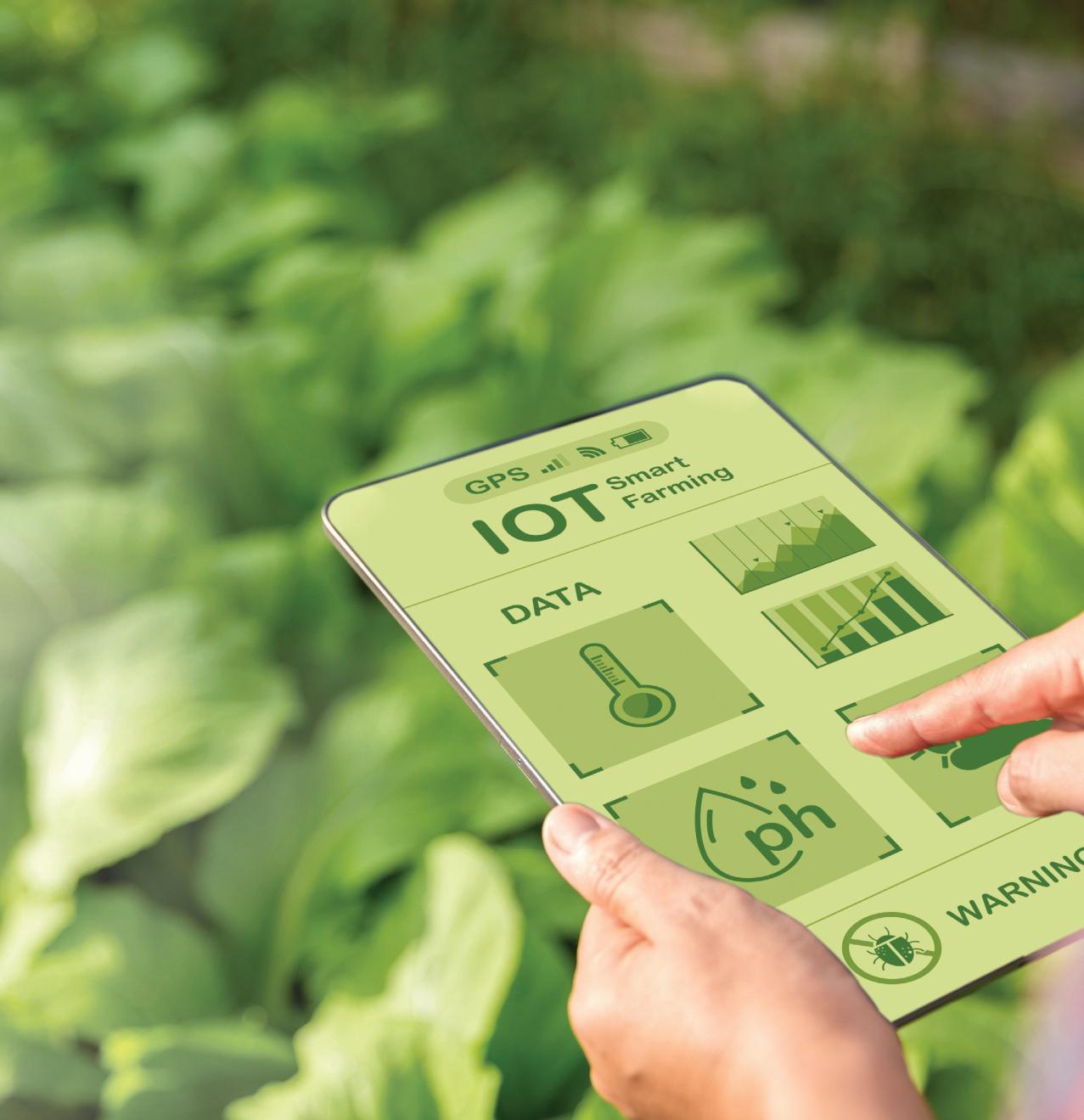
Crops:
Harnessing nuclear technologies to boost agricultural productivity
Poultry:
Bolstering resistance against poultry diseases
Livestock:
Moving towards methane-free livestock housing
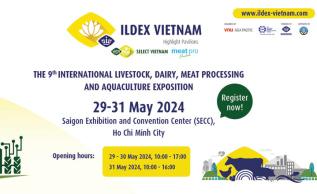
ILDEX Vietnam 2024 preview - p6 VOLUME 42 ISSUE 2 2024 www.fareasternagriculture.com
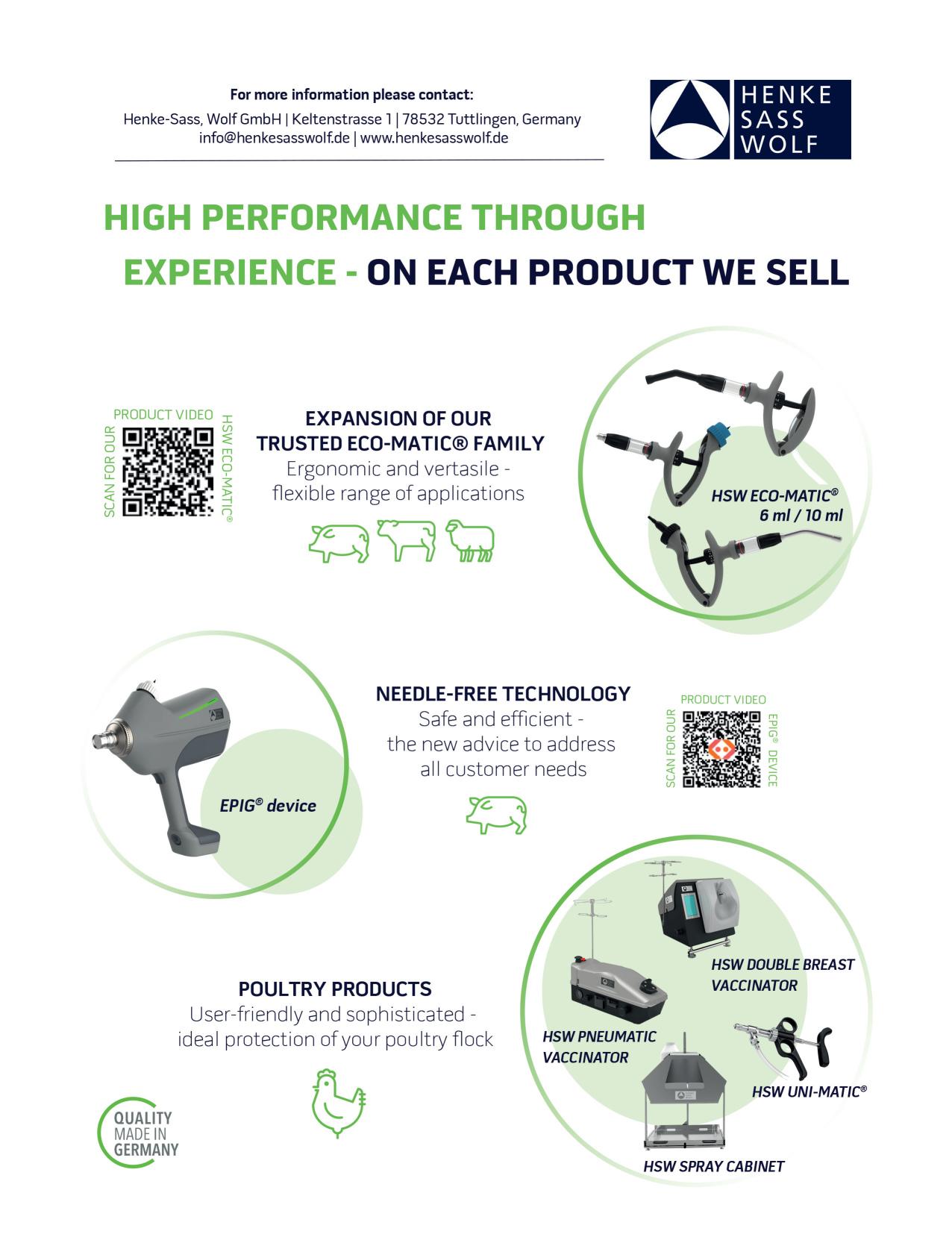
AGENDA
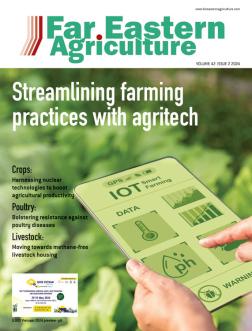
Editor: Madhuri Ramesh
Email: madhuri.ramesh@alaincharles.com
Editorial and Design team: Prashanth AP, Sania Aziz, Rajesh Balakrishnan, Shivani Dhruv, Matthew Hayhoe, Leah Kelly, Naveen Kumar, Rahul Puthenveedu, Madhurima Sengupta and Louise Waters
Publisher: Nick Fordham
Head of Sales: Vinay Nair
Email: vinay.nair@alaincharles.com
Magazine Manager: Richard Rozelaar, Tel: +44 207 834 7676
Email: richard.rozelaar@alaincharles.com
India TANMAY MISHRA +91 98 80075908 tanmay.mishra@alaincharles.com
Nigeria BOLA OLOWO +234 8034349299 bola.olowo@alaincharles.com
South Africa SALLY YOUNG + 27 (0) 824 906 961 sally.young@alaincharles.com
Head Office:
Alain Charles Publishing Ltd
University House, 11-13 Lower Grosvenor Place
London SW1W 0EX, United Kingdom
Phone: +44 20 7834 7676 Fax: +44 20 7973 0076
Middle East Regional Office: Alain Charles Middle East FZ LLC
Unit No E058, Media City Business Centre, Building No. 8, Dubai Media City, Dubai - UAE, PO Box 502207
Phone: +971 4 448 9260 Fax: +971 4 448 9261
Production: Rinta Denil, Nelly Mendes, Infant Prakash and Merin Sinny
Email: production@alaincharles.com
Subscriptions: circulation@alaincharles.com
Chairman: Derek Fordham
Printed by: Buxton Press
Printed in: April 2024
Far Eastern Agriculture (ISSN 0266-8025)
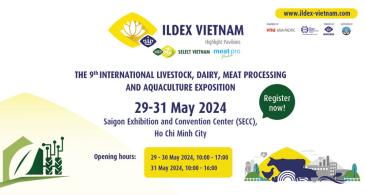
POULTRY
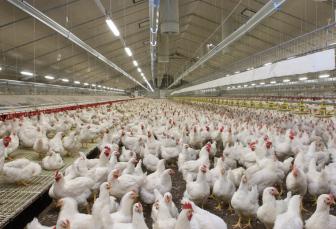
LIVESTOCK




FAR EASTERN AGRICULTURE • Issue Two 2024 CONTENTS Cover Image : Serving the world of business Compact Seeds and Clones SA..................11 Eurofeed Technologies S.p.a.....................12 GEM Indonesia............................................24 Henke-Sass, Wolf GmbH..............................2 Omex Agrifluids Ltd....................................15 PT Napindo Media Ashatama....................17 Unipoint AG................................................22 Advertisers Index
04 Calendar and industry events roundup 06 FAO Food Outlook and news updates
10 Bolstering resilience against poultry diseases
12 Moving towards methane-free livestock housing CROPS 14 Nuclear techniques to curb food security and global hunger 16 Climate-resilient agriculture: the potential of millets and sorghum EQUIPMENT 18 Castolin Eutectic wear protection for sugarcane processing equipment 19 Blending tradition, innovation and technology TECHOLOGY 20 Assessing SAT readiness of APO member countries in Asia 3 www.fareasternagriculture.com
AGENDA
EVENTS 2024
MAY
22-24
Livestock Philippines 2024
Pasay City, Philippines www.livestockphilippines.com
22-24
AGRITECHNICA ASIA
Bangkok, Thailand www.agritechnica-asia.com
29-31
ILDEX Vietnam
Ho Chi Minh City, Vietnam www.ildex-vietnam.com
JUNE
12-14
Agri Vietnam
Ho Chi Minh City, Vietnam www.agri-vietnam.com.vn
JULY
17 - 19
Indo Agrotech 2024 Expo & Forum Jakarta, Indonesia www.indoagrotech.id 30-01
INAGRITECH 2024
Jakarta, Indonesia www.inagritech-exhibition.net
AUGUST
28-29
PALMEX 2024
Kuala Lumpur, Malaysia www.asiapalmoil.com
28-30
AGRI CAMBODIA 2024
Phnom Penh, Cambodia www.agri-exhibitions.com/cambodia1.html
Alltech & Thai Wah collaborate for Asian agri-food sustainability

ALLTECH AND THAI Wah Public Co. (TWPC) have announced a collaboration aimed at advancing carbon reduction efforts in the Asian agri-food industry by leveraging scientific nutritional solutions and technologies.
During Alltech’s 25th-anniversary celebration in Thailand, a memorandum of understanding was signed for strategy, sustainability, and innovation at Thai Wah. The agri-food industry in Asia continues to grapple with significant carbon emissions, accounting for approximately 42% of all agri-food emissions globally, according to the third edition of the biennial Asia Food Challenge Report. In response to this challenge, Alltech and Thai Wah are joining forces to enhance sustainable animal feed production, improve animal feed nutrition
for optimal health and performance, and promote efficient waste utilisation through a biogas project. Additionally, the collaboration aims to reduce Thai Wah’s carbon footprint and advance its overall sustainability practices. Alltech will provide Thai Wah with innovative solutions and technologies in precision nutrition, digital farming transformation, waste management, and carbon footprint assessment and reduction road mapping.
“This partnership is an exciting opportunity to bring together technologies and resources to create more value for Thailand’s agri-food industry,” said president and CEO of Alltech, Dr Mark Lyons. “Alltech and Thai Wah are aligned in our values and our vision to create a world of abundance for future generations.”
Evonik Vland Biotech commences in China
HEADQUARTERED IN VLAND Biotech Innovation Park in Qingdao, the joint venture co-built by Evonik China Co Ltd and Shandong Vland Biotech Co Ltd. officially commenced operation on 14 March in Qingdao, China.
The joint venture aims to develop and expand gut health solutions products including probiotics for China's farm animals. Head of Evonik's life science division Nutrition & Care, the Animal Nutrition business line, Johann-Caspar Gammelin highlighted that their cooperation with Vland was a crucial step in realising their commitment to providing biosolutions including probiotics for animal gut health for the feed industry.
The agreement will allow Evonik to distribute the joint venture’s portfolio outside of the Greater China region, while also allowing the company to expand its gut health solutions by adding broader formulation elements to its global product portfolio.
At left, Dr Mark Lyons, president and CEO of Alltech; at right, Ho Ren Hua, CEO of Thai Wah.
4 www.fareasternagriculture.com FAR EASTERN AGRICULTURE • Issue Two 2024 Image Credit: Alltech
Upgrading the livestock and aquaculture subsectors in the Philippines
THE COUNTRY’S PREMIERE trade event for the Philippine livestock, poultry, and aquaculture industries will open its gates to the public from 22-24 May at the World Trade Centre in Pasay City, Philippines.
This year’s Livestock Philippines and Aquaculture Philippines is a three-day event featuring around 250 exhibitors. More than 10,000 visitors from around 30 countries are expected to attend the trade show, making it international in scope. With the theme 'Harnessing Innovation and Technology for Sustainable Farm Development,' this year’s edition aims to bridge the activities of public and private sectors, establish business opportunities for manufacturers and suppliers with potential distributors, partners, and buyers, and create an environment of knowledge and expertise sharing.
The event will include around 50 technical workshops and seminar sessions,

offering meticulously curated content through extensive seminars and conferences featuring industry experts discussing relevant topics. Livestock Philippines is also expected to host its first ASEAN Associations Roundtable discussion along
with the Biosecurity Asia Forum.
This year also marks the return of the Livestock Awards as well as the nationwide launch of Bidang Egg Kids, aimed at combatting protein malnutrition in Filipino children.
AGRI WEEK 2024: Propelling agriculture onto the global stage

RX JAPAN’S AGRI WEEK is an established pivotal platform for pushing agri-tech advancements to a global audience, showcasing cutting-edge solutions and fostering international collaboration within the industry.The three-day exhibition and conference fostered vital connections and explored innovative solutions for the future of agriculture. Two other events that took place alongside AGRI WEEK include, GARDEX and TOOL JAPAN that further enriched the experience by offering complementary perspectives, showcasing gardening and landscaping products along with tools and hardware equipment.
The 2023 edition was a resounding success. AGRI WEEK TOKYO held five specialised shows covering whole segments. The 13th AGRITECH TOKYO and 10th AGRINEXT TOKYO provided a glimpse into cutting-edge agricultural technology and materials, showcasing advancements in robotics, AI, drones, and data-driven farming practices. The first AGRIGREEN TOKYO, newly launched this edition, explored responsible and environmentally friendly agricultural methods, addressing crucial challenges faced by the industry today. Meanwhile, the fifth LIVESTOCK TOKYO and eighth AGRIPROCESS TOKYO served as a launchpad for emerging livestock farming products and food processing machinery, brimming with fresh ideas and innovative solutions.The conference sessions delved into diverse topics of crucial importance, including smart agriculture, climate-resilient crops, food security and the role of technology in transforming the agricultural landscape. and investors alike.
Looking ahead, AGRI WEEK is undergoing a bold transformation. Commencing from 22-24 May this year at Grandmesse Kumamoto, the show will be rebranded as J AGRI, signifying a strategic move towards unifying its domestic and international identities. J AGRI 2024 will introduce exciting new features and curate experiences that foster greater international collaboration and knowledge exchange.
FAR EASTERN AGRICULTURE • Issue Two 2024 AGENDA
5 www.fareasternagriculture.com
Visitors from around 30 countries are anticipated to attend the trade show, making it international in scope.
Image Credit: Livestock Philippines
Image Credit: RX Global
Commencing from 22-24 May this year at Grandmesse Kumamoto, the show will be rebranded as J AGRI.
AGENDA
FAO Food Price Index ticks up after seven-month decline
AFTER A SEVENMONTH long declining trend, the FAO Food Price Index (FFPI) stood at 118.3 points in March 2024, up 1.3 points (1.1%) from its revised February level, as increases in the price indices for vegetable oils, dairy products and meat slightly more than offset decreases in those for sugar and cereals.
The FAO Cereal Price Index averaged 110.8 points in March, down 3.0 points (2.6%) from February and 27.7 points (20%) below its March 2023 value. Global wheat export prices declined for the third consecutive month in March, mostly due to continued strong export competition among the European Union, the Russian Federation and the US. In contrast, maize export prices edged marginally upwards month-on-month. For other coarse grains, world prices of barley fell while those of sorghum increased in March. The FAO All Rice Price Index declined by 1.7% in March, largely reflecting a subdued global import demand.
The FAO Vegetable Oil Price Index averaged 130.6 points in March, up 9.7 points (8%) from February and reaching a one-year high. The marked rebound

reflected higher price quotations across palm, soy, sunflower and rapeseed oils.
The FAO Dairy Price Index averaged 124.2 points in March, up 3.5 points (2.9%) from February, marking the sixth consecutive monthly increase. World cheese prices increased the most in March, reflecting the steady import demand from Asia, higher internal sales in Western Europe leading to the spring holidays, and
seasonally falling production in Oceania. International butter prices increased further in March, mainly due to solid seasonal demand and somewhat tighter European stocks, while international whole milk powder prices dropped as global import demand softened despite seasonally declining production in Oceania. Skim milk powder prices also fell, as markets remained quiet, with lower spot demand.
The FAO Meat Price Index averaged 113.0 points in March, up 1.9 points (1.7%) from February, marking the second consecutive monthly increase. International poultry meat prices, pig meat prices and world bovine meat prices increased in March due to high demand and increased purchases from leading importing countries.
The FAO Sugar Price Index averaged 133.1 points in March, down 7.6 points (5.4%) from February after two consecutive monthly increases. The March decline in international sugar price quotations was mainly driven by the upward revision to the 2023/24 sugar production forecast in India and the improved pace of sugar harvest in Thailand at the final stage of the season.
ILDEX Vietnam all set to open its doors for the 2024 edition
THE NINTH EDITION of ILDEX
Vietnam, the international livestock, dairy, meat processing, and aquaculture exposition, stands poised to once again set the standard as the premier trade exhibition in the Asia region.
Garnering robust attendance and brimming with abundant business opportunities, industry experts and leading exhibitors alike have hailed it as the foremost marketplace and international business platform for the Vietnamese market. This year’s edition is scheduled to take place from 29-31 May 2024 at the esteemed Saigon Exhibition and Convention Centre.
Visitors can anticipate encounters with more than 180 top companies hailing from more than 32 countries worldwide within
the livestock and aquaculture industries, all under one roof. This presents a remarkable opportunity to engage with global brands from diverse nations, constituting more than 85% of the total exhibition, offering cutting-edge technology and innovation to drive business development in Vietnam and across Asia.
In a bid to comprehensively cover the supply chain, ILDEX Vietnam 2024 also introduces two special pavilions: the Meat Pro Pavilion, focusing on food processing and packaging, and the HAN Select Vietnam Pavilion, centered on AgricultureHorticulture businesses. The exhibition will showcase a diverse array of business profiles spanning poultry, pig, livestock, sustainable farming, aquaculture, animal health, and meat processing, accentuated by technical
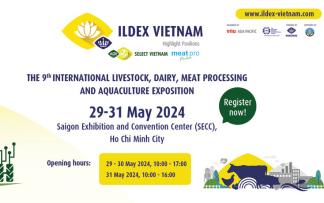
Visitors can anticipate encounters with more than 180 top companies within the livestock and aquaculture industries, all under one roof.
conferences throughout the three-day event. Admission to this edition is priced at US$10 per person for a three-day entry.
For those eager to explore the extensive exhibitor list and conference programme, please visit: www.ildex-vietnam.com.
6 www.fareasternagriculture.com FAR EASTERN AGRICULTURE • Issue Two 2024 Image Credit: FAO Image Credit: ILDEX Vietnam
Record-breaking attendance for VICTAM and GRAPAS Asia 2024

IN MARCH 2024, Bangkok hosted the 16th edition of VICTAM Asia and GRAPAS Asia, alongside Health & Nutrition Asia, at BITEC. Breaking records, the event attracted 8,722 visitors from 73 countries, highlighting its importance in the animal feed and grain processing industries.
This year, 315 exhibitors from around the world showcased their latest products and innovations, confirming the event's status as Asia's go-to exhibition for these sectors. The significant jump in attendance, a 42.5% increase from 2022, reflects a growing interest in these fields and marks a solid recovery and growth after the challenges posed by the pandemic.
The event brought together a wide range of industry leaders, including executives from top companies like AMP International and Cargill, as well as ASEAN investors and
academics. This mix of attendees fostered valuable discussions and connections.
A key part of the event was the comprehensive programme of conferences and seminars. With 141 speakers from 14 countries, topics covered included the future of livestock feed, shrimp farming innovations, and advancements in feed safety and milling technology. The third International Feed Technology Congress, organised with Wageningen University, focused on the ASEAN feed industry's developments and challenges.
A key part of the event was the comprehensive programme of conferences and seminars.
Conferences like ‘Flour Milling
Maximised’ discussed the changing wheat processing industry, addressing both current practices and future directions. Another highlight was the Thai Feed Mill Association conference, where discussions centered on modernising livestock feed for 2024 and managing carbon footprints.
The ‘Networking Night’ was another event highlight, drawing over 250 industry professionals for an evening of discussions and networking. This event emphasised the industry's strong interest in the latest technological advancements.
The next edition of VICTAM Asia and GRAPAS Asia together with Health & Nutrition Asia is scheduled for 10–12 March 2026, at BITEC, Bangkok. ■
For more details, please visit www.victamasia.com.
FAR EASTERN AGRICULTURE • Issue Two 2024 SPONSORED CONTENT 7
The event attracted 8,722 visitors from 73 countries, highighting the importance of the animal feed and grain processing industries.
www.fareasternagriculture.com
The mix of attendees fostered valuable discussions and connections. Image Credit: VICTAM International

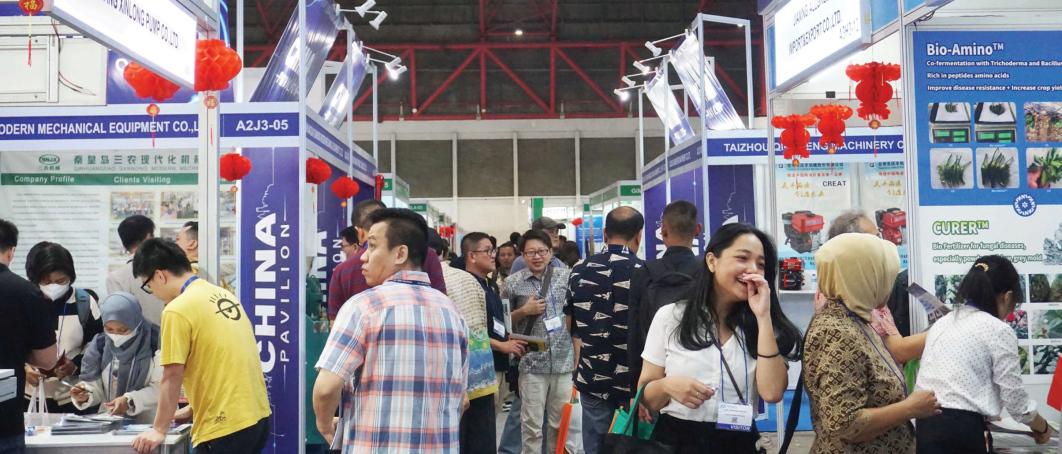
INAGRITECH 2024: ASEAN’s largest agri machinery and technology exhibition
With an emphasis on the digitalisation and smart agriculture technology, INAGRITECH 2024 along with other co-located events, will present a one-stopsolution for all agriculture sectors.
INDONESIA IS TARGETED to become the world's food granary by 2045. To achieve this ambitious goal, the Indonesian government is paying serious attention to the agricultural sector with various programmes, such as increasing the level of food self-sufficiency and implementing smart farming technology and pumping irrigation to increase the productivity of the agricultural sector. In 2024, the sugar industry is targeted to reach self-sufficiency, followed by rice and corn in 2025-2026. This steady progress in the agricultural sector will lead Indonesia to become the world's food granary by 2045. GEM Indonesia is committed to support the Indonesian government to achieve its target of becoming the world's food granary in 2045 by presenting a business platform that will be attended by major players in the agricultural industry.
INAGRITECH is the most sought
exhibition for agricultural machinery and technology as well as the largest indoor and outdoor trade fair for agriculture industry in Indonesia. Returning in its 10th edition, INAGRITECH 2024 co-locating with INAGRICHEM 2024, INAPALM Asia 2024, SugarMach Indonesia 2024, RubberTech Indonesia 2024, and Pump & Valves Indonesia 2024 are ready to present you one stop solutions for all sectors of agriculture. These exhibitions will be held
This year, INAGRITECH is expected to present 350 global companies from 25 countries and attract 25,000 trade visitors.
from 30 July to 1 August 2024 at JIExpo Kemayoran in Jakarta, Indonesia.
Compared to the previous year, INAGRITECH 2024 will emphasise more on the digitalisation and smart agriculture technology. Agri Technology Forum 2024 will also present to invite industrial experts, researchers, government, and key players to discuss and exchange knowledge, work-inprogress, experience, and case studies pertaining to the agriculture industry.
INAGRITECH 2024 is also expected to present 350 global top exhibiting companies from 25 countries in the world and attract 25,000 trade visitors, making this exhibition a golden opportunity for companies, manufacturers, distributors, government, and key decision makers to showcase their market excellence, discuss business matters and find the latest information.
This exhibition will present technology, innovations, and solutions pertaining to tractor & machinery, smart agriculture technology, agrochemical & greenhouse, horticultural & floricultural technology, sugar machinery & technology, and rice technology. ■
SPONSORED CONTENT 8
www.fareasternagriculture.com
FAR EASTERN AGRICULTURE • Issue Two 2024 Image Credit: INAGRITECH
GEM Indonesia is committed to supporting the Indonesian government to become the world’s food granary in 2045.

Bolstering resilience against poultry diseases
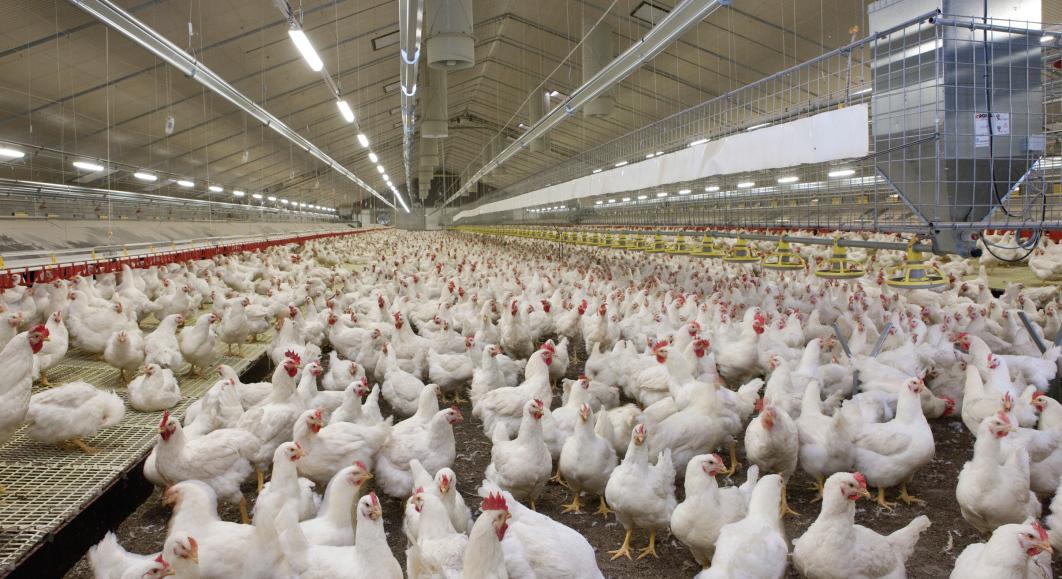
Compartmentalisation not only boosts the resilience of the poultry sector and economy, but also ensures high farm yields and income stability among farmers.
DISEASE OUTBREAKS ARE a common occurrence in the poultry sector, with Avian Influenza (AI) and Newcastle Disease (ND) being two major diseases that threaten global poultry health. With millions of birds being culled each year, these diseases cause significant economic losses for the poultry industry, particularly in developing nations that rely on poultry as a major source of protein.
Birth of the compartmentalisation concept
Managing a disease outbreak often involves a temporary halt in international trade until the affected region has achieved a diseasefree status. However, since achieving this takes time, it can have a devastating impact on the economy and food security of both the affected and neighbouring countries. To address these issues, the World Organisation
for Animal Health (WOAH) formerly known as the Office International des Epizooties (OIE), introduced the concept of compartmentalisation, which enables international trade to continue even during the event of a notifiable disease outbreak.
According to the concept, an animal subpopulation is contained within single or multiple establishments under a common
Compartmentalisation enables international trade to continue even during the event of a notifiable disease outbreak.

biosecurity management system. Despite the country not having achieved national disease freedom, procedures developed by the WOAH for zoning and compartmentalisation allow countries to define animal sub-populations that are free from diseases and establish conditions for trade in animals and products from these subpopulations.
For international trade to progress however, a high level of trust between the exporting and importing countries needs to be established. Based on detailed documentation, the exporting country must be able to demonstrate that the compartment complies with the WOAH recommendations. Moreover, transparency must also be demonstrated in regard to disease reporting and auditing of the surveillance and control procedures on which the compartment is based.
To recognise a compartment, the importing country must also have confidence in the exporting country's
POULTRY 10
www.fareasternagriculture.com
biosafety
disease surveillance standards are implemented to maintain a closed-farm environment. FAR EASTERN AGRICULTURE • Issue Two 2024 Image Credit: Adobe Stock
Strict
and
veterinary authority. For this purpose, the national veterinary services and aquatic animal health services of the exporting country can be sustainably improved by engaging with the WOAH in the Performance of Veterinary Services (PVS) pathway, which provides countries with an extensive understanding of their strengths and weaknesses using a globally consistent methodology based on WOAH international standards on animal health and welfare.
CP Foods implements compartment system
As part of its innovative strategy to safeguard
The implementation of the compartment system has greatly helped in raising Thai poultry standards.
poultry production, Thailand-based Charoen Pokphand Foods (CP Foods) has adopted the compartment scheme, thereby assuring disease-free poultry operations. Through this initiative, the company highlights the importance of food safety both for raw and cooked products.
The compartment system involves implementing strict biosafety and disease surveillance standards to maintain a closedfarm environment. To minimise the risk of diseases like AI and ND, veterinary specialists carry out regular pathogen tests for bird flu, Salmonella, and the Newcastle virus.
The disease control strategy of the compartment system is based on four pillars including, rigorous biosecurity measures, proactive bird flu surveillance, specific disease control within farms and surrounding areas, and a traceability system to monitor the food chain. By employing advanced closed house facilities comprising an evaporative cooling system, CP Foods leverages AI and IoT for week-long animal
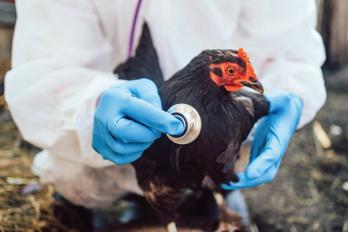
health monitoring, thus significantly reducing disease risk through minimal human contact.
The implementation of this system across its poultry farms has greatly helped in raising Thai poultry standards through knowledge transfer, contract farming, and standardised disease prevention measures. Besides improving the overall resilience of the Thai poultry sector and economy, the implementation of the compartment system also enhances farm yields and income stability for farmers. ■
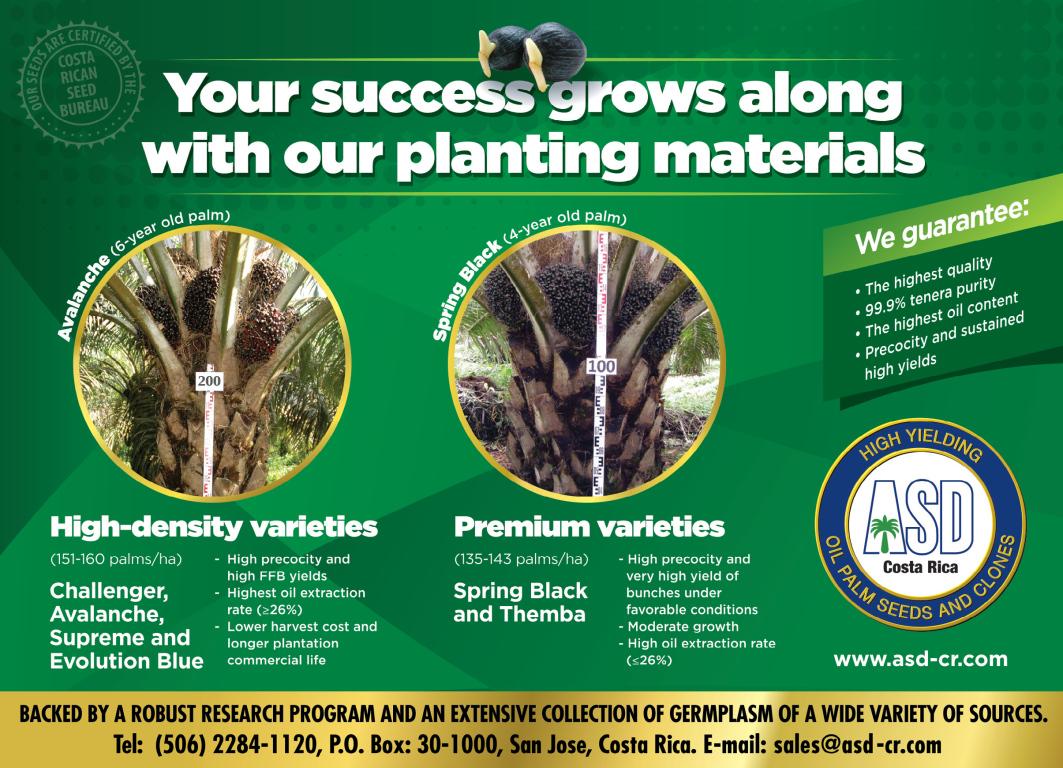
FAR EASTERN AGRICULTURE • Issue Two 2024 POULTRY 11 www.fareasternagriculture.com
Image Credit: Adobe Stock
Veterinary specialists carry out regular pathogen tests to minimise the risk of poultry diseases.
Moving towards methane-free livestock housing
In a new study, researchers have demonstrated using UV light and chlorine to eradicate low-concentration methane from the air.
AS THE WORLD continues to grapple with climate change, scientists race to devise sophisticated methods that aim to significantly reduce and reverse its impact. A recent study led by University of Copenhagen (UCPH) atmospheric chemistry professor Matthew Stanley Johnson brought to the spotlight a new method devised by researchers from the University, to eradicate low-concentration methane from the air.
A new Methane Eradication Photochemical System (MEPS) reaction chamber, comprising an elongated metal box with an array of hoses and measuring instruments, was built. Using chlorine and energy from light, researchers were successful in removing methane from air at



a greater speed and efficiency compared to its natural decomposition rate in the atmosphere. Inside the box, a chain reaction of chemical compounds takes place, which breaks down the methane and removes a large portion of the gas from air.
"Methane decomposes at a snail's pace because the gas isn’t especially happy about reacting with other things in the atmosphere," explained Johnson. "However, we have discovered that, with the help of light and chlorine, we can trigger a reaction and break down the methane roughly 100 million times faster than in nature."
The Intergovernmental Panel on Climate Change (IPCC) has determined that reducing methane gas emissions—which are considered to be 85 times more potent of a greenhouse gas than CO2—will immediately reduce the rise in global temperatures. More than half of the world's methane emissions have been found to originate from cattle and fossil fuel production.
Therefore, as a preliminary investigation for this study, the researchers travelled around the country measuring how much methane leaks from cattle stalls, wastewater treatment plants and biogas plants. In several places, the researchers were able to document that a large amount of methane leaks into the atmosphere from these plants.
With the development of their new MEPS reaction chamber, the researchers plan to connect the device to the ventilation system in a livestock barn, where it will behave as a methane cleaner. A 40ft shipping container will soon arrive at the Department of Chemistry and will become a larger prototype of the reaction chamber that the researchers built in the laboratory.
The result of the study brings us closer to being able to remove greenhouse gases from livestock housing.
The research was conducted in collaboration between the University of Copenhagen, Aarhus University, Arla, Skov and the UCPH spin-out company Ambient Carbon, started and now headed by Professor Matthew Stanley Johnson. The company is currently developing the MEPS technology and plans to make it available to the public in the near future. ■
LIVESTOCK 12 www.fareasternagriculture.com
The researchers built an MEPS reaction chamber and devised a method that simulates and greatly accelerates methane's natural degradation process.
FAR EASTERN AGRICULTURE • Issue Two 2024 Image Credit: Michael Skov Jensen, SCIENCE/KU
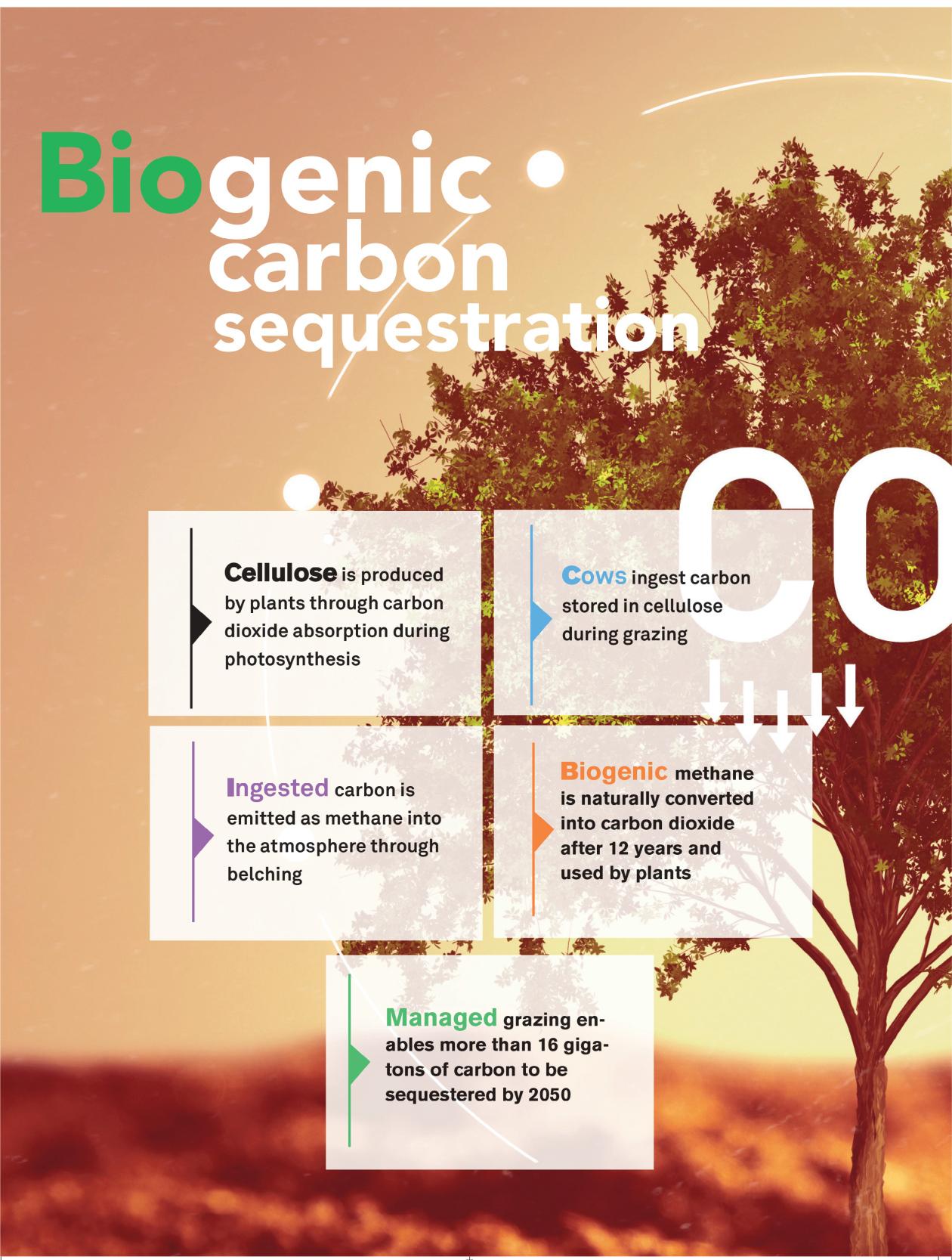

Nuclear techniques to curb food security and global hunger
With hunger and malnutrition on the rise, the FAO and IAEA are developing innovative nuclear technologies to boost agricultural productivity.
AMIDST A WORLDWIDE increase in food demand, the need for new and efficient agricultural techniques are on the rise. To address these demands, the Food and Agriculture Organisation of the United Nations (FAO) entered into a strategic partnership with the International Atomic Energy Agency (IAEA) to explore the role of nuclear technologies in providing unique and competitive solutions to reduce malnutrition, improve environmental sustainability and ensure food security.
2021 saw the strengthening of their long-standing collaboration through the upgrading of the Joint Division to the Joint FAO/IAEA Centre, which coordinates and supports applied research through more than 25 coordinated research projects annually. The partnership works towards the shared vision of identifying the areas where nuclear techniques can boost agricultural production, while also
protecting natural resources, facilitating agricultural trade and promoting One Health.
The applications of nuclear technology in agriculture are aplenty. Innovative technologies developed and applied through the Joint FAO/IAEA Centre, play a huge role in addressing both present and future global challenges.
Key areas where nuclear technologies can
Nuclear technologies developed and applied through the Joint FAO/IAEA Centre play a role in addressing both present and future global challenges.
help boost agricultural productivity include:
• Animal health: By recognising the interconnected nature of plant, animal, human and environmental health, the FAO’s One Health approach helps us understand that tackling animal health threats can also support human health. Today, a popular molecular nuclear technique called real-time Polymerase Chain Reaction (PCR) test, has been widely used to rapidly detect and control animal diseases.
• Soil and water management: Introducing nuclear isotopes to the soil helps in tracking and monitoring soil quality. For example, adding nitrogen-15 stable isotope fertiliser has proved to be useful in tracing the efficiency of fertiliser uptake and measuring the amount of atmospheric nitrogen captured by crops. These factors play a significant role in determining the overall soil health. Based on these measurements, fertiliser use can be adjusted to obtain maximum crop yield.
• Pest management: Rearing insects in large numbers and sterilising them
CROPS 14
www.fareasternagriculture.com
FAR EASTERN AGRICULTURE • Issue Two 2024 Image Credit: Adobe Stock
Introducing nitrogen-15 stable isotope to the soil helps in tracing the efficiency of fertiliser uptake and measuring the amount of atmospheric nitrogen captured by crops.
through ionising radiation, suppresses or completely eradicates harmful insect pests. This nuclear-derived, sterile insect technique (SIT) is an environmentally friendly method which involves releasing these insects back into pest-infested areas post sterilisation. Moreover, this technique effectively prevents the proliferation of invasive species and is a much safer alternative to insecticides.
• Food safety and quality: Exposing food to ionising radiation, particularly gamma rays, can significantly improve its safety and quality by killing potentially harmful microbes, thus preventing the spread of insect pests and foodborne illnesses. Therefore, this process, also known as food irradiation, detects and eliminates harmful residues and contaminants in food products, thereby enabling smooth trade across boundaries.
• Crop breeding: In the realm of plant breeding, nuclear technology can be used to develop improved, climate-resistant, adaptable varieties that can assure food and nutritional security to vulnerable countries. For example, gamma rays, X rays, ion or electronic beams can be used on seeds to initiate genetic changes, resulting in crop varieties that are tolerant to drought, heat or flooding. Other favourable characteristics may include shorter growth cycles, improved yield and quality, and better resistance to pests and diseases.
Malaysia adopts nuclear techniques in plant breeding
As part of its efforts to enhance the sustainability of its food and agriculture sector, Malaysia has been using a process known as mutation breeding to produce stronger, more nutritious and higheryielding crops. One notable example includes the country’s recent development of drought and flood-resistant rice varieties.
The Malaysia Nuclear Agency (MNA) was also provided the extended designation as an IAEA Collaborating Centre, which— according to the Malaysia Nuclear Agency director general, Rosli Darmawan—marked a significant milestone in the country’s journey towards harnessing advancements in nuclear technology.
In September 2019, the new Collaboration Centre, Gamma Greenhouse Facility of the MNA was formalised. The objective was to utilise gamma radiation for mutation breeding and through molecular research, understand the chromosomal effects of acute and chronic radiation in plants.
The large irradiation facility enabled researchers to expose plants to low-dose radiation over longer periods of time, offering enhanced possibilities to improve crops through natural selection. Besides Malaysia, the Collaborating Centre will make extensive use of the gamma greenhouse facility to provide services to plant breeders across Southeast Asia.
IAEA and FAO launch Atoms4Food initiative
In October last year, the flagship ‘Atoms4Food’ initiative was launched to support countries by using nuclear techniques to boost
Tailor-made research will form the core of the Atoms4Food initiative, focusing on the specific needs of countries with concrete innovations and solutions.
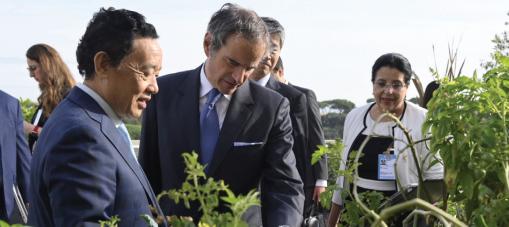
food security and tackle global hunger. Focusing on the specific needs of countries, the IAEA and FAO through the Atoms4Food initiative will provide seven country-specific assessments to harness partnerships with a number of traditional and non-traditional partners, including UN agencies, the Consultative Group on International Agricultural Research (CGIAR) and international financial institutions, among others.
As part of the initiative, a number of comprehensive packages will also be developed for each country, including infrastructure support and capacity building in the use of nuclear techniques for food security. ■

FAR EASTERN AGRICULTURE • Issue Two 2024 CROPS 15 www.fareasternagriculture.com
Credit:
FAO and IAEA officials on the sidelines of the World Food Forum on 18 October 2023. Image
D. Calma/IAEA
Climate-resilient agriculture: the potential of millets and sorghum

Sorghum United CEO, Nate Blum, discusses the recent launch of the Indo-US Millets initiative that is bringing together major players across India and the US, to unlock the potential of resilient, nutrition-packed crops called millets.
IN A WORLD grappling with the everincreasing challenges of climate change, food security has become a paramount concern. With extreme weather events, water scarcity, and rising temperatures to contend with, it is imperative that we find climate-resilient agricultural solutions for the future to support our growing population. Many of the crops that we heavily rely on today, such as rice, wheat, and maize, are vulnerable to the effects of climate change. Studies predict that maize production will drop 1520% in North and South America by 2050, which could have a devastating effect on the population. Rice is a staple for nearly half of our population, yet rising temperatures could result in a 40% decrease in rice yields by 2100. In Africa and South Asia, where food security is already a significant concern, wheat yield is predicted to lower 15-16% by the middle of the century.
But all is not lost. The Indo-US Millets Initiative, a collaborative effort between organisations in India and the United States, has been launched to help solve these pressing food production issues. Spearheaded by several organisations across both countries, including the North American Millets Alliance, India Millets Initiative, Sorghum United, and the
Daugherty Water for Food Global Institute, the initiative aims to raise awareness about the benefits of millets and sorghum and increase and exchange research regarding their implementation into current food systems.
Despite being overshadowed for so long, millets and sorghum offer numerous nutritional and environmental benefits, and it’s time we take advantage of them. These grains have a significantly higher tolerance to drought and heat than maize, wheat, and rice, making them more reliable crops as global temperatures continue to elevate. Moreover, millets and sorghum require 30% less water than current staple crops, holding the potential to reduce water irrigation demand by 33%. In addition, they also provide numerous health benefits that wheat, rice and maize lack.
Millets and sorghum require less water, thus holding the potential to reduce water irrigation demand by 33%.
As the Indo-US Millets Initiative works to bring millets and sorghum back into the limelight, there are several challenges to overcome. In order to increase the production of these grains, there is a pressing need for additional research into developing high-yielding seed varieties and efficient processing strategies as well as technical support for farmers. Public access and awareness must also be increased in order to incentivise these important steps.
The United Nations declared 2023 the 'International Year of Millets,' demonstrating an increasing interest in exploring millets as a weapon against food insecurity. With the initiative and other millets programmes, such as the Alternative Crops Lab, based in Nebraska, the area is poised to take the lead as a hub for millets and sorghum research and development within the US. Recently, experiments have been greenlighted to study the contrast in greenhouse gas emissions from maize and millets, and new varieties of millets have been tested in Nebraska’s climate. There have also been efforts to begin studies of consumer demand and farmer profitability.
Given the uncertainties surrounding future food production and the challenges posed by climate change, the importance of investigating millets and sorghum as viable solutions cannot be overstated. As these grains gain renewed popularity, they illuminate a sustainable path toward improving global health and securing food stability. ■
CROPS 16
www.fareasternagriculture.com
FAR EASTERN AGRICULTURE • Issue Two 2024 Image Credit: Adobe Stock: Adobe Stock
The Indo-US Millets Initiative aims to raise awareness and exchange research regarding their benefits and implementation of millets and sorghum into current food systems.
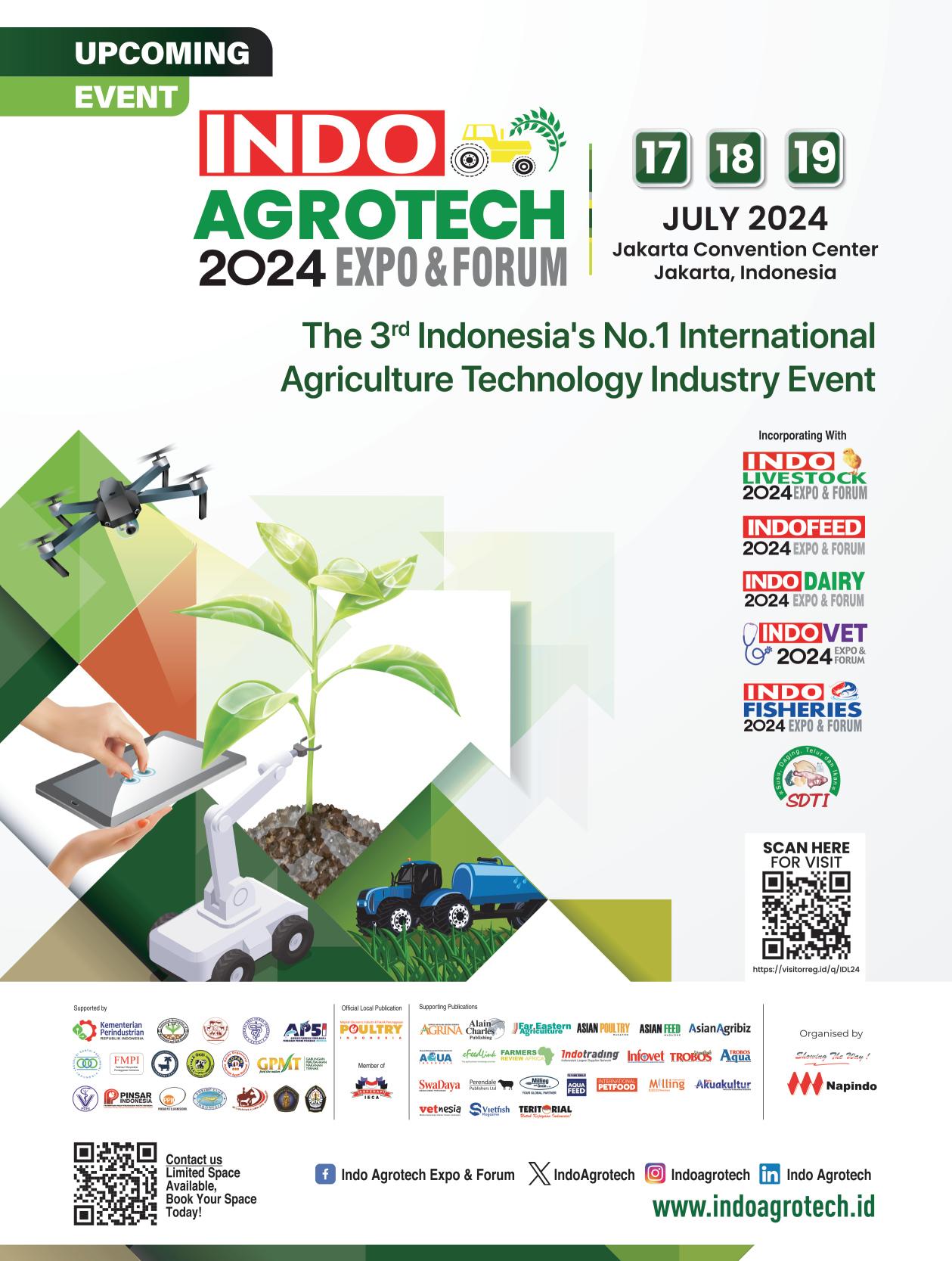
Castolin Eutectic wear protection for sugarcane processing equipment

Castolin Eutectic’s technical lead, Raul Amor explains how excessive wear can be avoided to ensure that critical sugar processing machines will remain in service throughout the harvest.
SUGARCANE PROCESSORS
FACE the challenge that cane is extremely tough and can damage processing equipment. Components in harvesters, feed systems, knives and hammers in defibering units and crushers can all wear out quickly and even break down. But there is a solution: wearfacing coatings protect equipment from the damage caused by sugar cane. The benefits are that equipment will extract sugar more efficiently, last longer and need fewer repairs.
Typically, mills process between 10,000 to 45,000 tons of sugar cane per day. They need heavy industrial machinery – and a lot of it – to do this. However, excess wear and breakages can stop production. This can be expensive due to repair costs, downtime and lower yields.
Overcoming abrasion at every processing step
Abrasion from sugarcane, stones and earth can cause excess wear on washing, chopping, defibering and crushing systems. Wearfacing coatings can overcome this to enable operators to extract more sugarcane with less downtime. One particularly vulnerable area is rollers in cane crushers, which experience wear and breakages on their teeth. Being made of cast iron, the rolls need particular care. To prevent cracks forming, specialist welding electrodes for
cast iron should be used.
It is important for the electrode material to have high hardness and corrosion resistance, which will provide additional wear resistance and ensure a long service life for the rollers. For rollers that experience a lot of damage from rocks and soil, some wearfacing materials offer better resistance to impact.
Wearfacing coatings can build the teeth sides and tips to their original shape so that the crusher will work more efficiently for higher yield. Several passes can be applied to rebuild the teeth with a serrated teardrop profile. This can even be done with an automated welding system to ensure uniform size and spacing between teardrops. It is also possible to apply a top layer of dots onto the sides of teeth while a roller is turning. This creates a rough surface that maximises juice extraction.
Case study: cost savings in action
Burning bagasse can also cause excess wear
Wearfacing coatings can overcome abrasion, enabling operators to extract more sugarcane with less downtime.
on fans, tubes and ducts. At one sugarcane mill, a boiler induced draft fan was suffering severe erosion caused by unburned bagasse and soil. These had begun to wear down important sections of the blades until, gradually, the entire rotor wore down. For an idea of the potential impact on production, the plant had four boilers, and each one with a fan.
In a previous attempt to repair the fan, a wearfacing had been applied by electrode welding in one area of the blade where wear had begun to affect the fan. However, this did not last. As an alternative, a Castolin Eutectic engineer applied an arc spray coating based on a 10 mil Arc 500 wire and 20 mil Arc 595 wire. This doubled the rotor lifespan without increasing the weight of the rotor or affecting its balance.
The result: a more profitable production line
By installing wear-resistant coatings, processing equipment will withstand abrasion from the coarse sugarcane. By avoiding such wear and tear, equipment can last a whole milling season without downtime for repairs. Uninterrupted, each milling season will be more productive, and ultimately more profitable. ■
To find out more about wear resistant coatings, visit: https://www.castolin.com/sugar
EQUIPMENT 18
www.fareasternagriculture.com
FAR EASTERN AGRICULTURE • Issue Two 2024 Image Credit: Castolin Eutectic
By installing wear-resistant coatings, processing equipment will withstand abrasion from the coarse sugar cane.

Blending tradition, innovation and technology
The partnership between Flory Industries and Bonsai Robotics opens new doors for nut farming through the sophisticated blend of tradition and technology.
HOLDING SIGNIFICANT
PROMINENCE in cuisine and culture, nuts have been widely cultivated in numerous East Asian countries including China, Japan, South Korea and Taiwan, making it vital to the region's agricultural landscape and economy. Besides being valued for their nutritional benefits, nuts are also commonly used in traditional medicines and rituals. However, nut farming in East Asia faces a multitude of challenges including climate change, labour shortage, limited access to technology, land degradation, market competition, and pest and disease management, among others.
To address these challenges, numerous private sector companies have began entering into partnerships to develop sophisticated tools and technologies that enhance the process of nut farming. A notable example includes the recent collaboration between orchard harvest equipment manufacturer, Flory Industries and leading orchard harvest autonomy
provider, Bonsai Robotics. Integrating Bonsai's state-of-the-art robotics solutions and Flory's impressive line of agricultural equipment, the first product developed through this partnership will be unveiled at the upcoming World Ag Expo, scheduled to be held in the city of Tulare, California.
Commonly used machines used in nut harvesting include:
• Tree shakers that utilise vibrations to help knock off nuts from trees.
• Nut sweepers that help ease the picking process by pushing fallen nuts into rows.
• Nut harvesters that pick up these nuts and empty them into a cart, to be taken
The Super V sweeper equipped with Bonsai's technology, will be unveiled at the World Ag Expo next year.
to the hulling facility.
Focusing on nut sweepers, Flory's Super V sweeper is already arguably the most efficient piece of nut harvesting equipment available today. With the integration of Bonsai's technology, it is expected to enhance the operator's productivity even more, while also reducing operational costs, and increasing sustainability in farming practices. By combining Flory's extensive experience and market presence with Bonsai's innovative technological prowess, this partnership therefore, marks a significant milestone in the agriculture sector.
"At Bonsai, we are thrilled to partner with Flory, a company that shares our vision for the future of agriculture," said CEO of Bonsai Robotics, Tyler Niday. "This collaboration allows us to bring our advanced robotics technology to a wider market, revolutionising how farming is done. The Super V sweeper is just the beginning of what we believe will be a transformative era in agricultural technology." ■
FAR EASTERN AGRICULTURE • Issue Two 2024 EQUIPMENT 19
www.fareasternagriculture.com
Image Credit: Adobe Stock
The partnership marks a significant milestone in the agriculture sector.

Assessing SAT readiness of APO member countries in Asia
Upstream,
OVER THE YEARS, the steady influx of technology in the East Asian agriculture sector has been a major turning point for several countries in the region. The adoption of drones, agricultural robots, IoT- and AI-based platforms, particularly by the private sector, has greatly contributed to agricultural transformation in these countries.
A 2023 report by the Asian Productivity Organisation (APO)—through case studies—analysed the readiness of select APO member countries including India, Indonesia, Pakistan, Thailand, Vietnam and China for its Smart Agricultural Transformation (SAT) programme. One of the main objectives of the project was to propose policy recommendations for its adoption and implementation. Upstream, production, downstream and enabling factors were considered while assessing for SAT readiness.
Case studies for the following countries demonstrate in brief, the results of their analysis:
• India: The country was found to be below the desired level of SAT readiness by 50%. Hence, both agricultural transformation and digitalisation were recommended to go deeper and wider for both production and marketing. Moreover, major stakeholders of agricultural transformation, particularly smallholders and labourers, among others
need to be well equipped to adopt latest technologies.
• Indonesia: According to the report, programme effectiveness was not found to be optimal due to a decline in agricultural budget, distribution of equipment that is not per needs and the institutional preparation of the recipient farmers. The report suggests that effective collaboration among the three main ministries, namely the MoA, the MoV and the MCI would help facilitate smart agricultural transformation.
• Pakistan: According to the findings, financial issues and small holdings have prevented farmers from switching to SAT, thus causing them to continue relying on low-cost technology. The lack of a cooperative farming system has also been a key contributor. The report suggests that the involvement of public and private partnerships in R&D as well as appropriate financial aid provided to the
The objective of the project was to analyse SAT readiness and propose policies for their adoption and implementation.
small and medium farming communities would do wonders in transforming the country’s agriculture sector.
• Thailand: Owing to its strong and wellprepared agricultural machinery, digitalisation, lack of labour, aging society, low interest business loans, R&D and support from the private sector, the country has shown remarkable readiness for transformation of the agricultural sector. The report expects effective agricultural transformation taking place in the coming decade.
• Vietnam: The country has been consistently inclined towards improving its overall agricultural landscape. So far, a significant shift towards sustainable, high value-added, and effective use of resources in agriculture has been observed. Moreover, there has also been a notable increase in the legal bases for the development of SAT. Due to these positive factors, results from the analysis show the overall SAT readiness in Vietnam to be medium. Moreover, the report also indicated that the country’s SAT readiness was comparatively higher at the production level than the downstream level. In order to speed up the SAT process, the country is required to increase investments in focused areas pertaining to agricultural logistic arrangement, land accumulation for large-scale farming, agricultural
TECHNOLOGY 20
production, downstream and enabling factors were considered to analyse the SAT programme readiness of select APO member countries.
www.fareasternagriculture.com
FAR EASTERN AGRICULTURE • Issue Two 2024 Image Credit: Adobe Stock
The adoption of smart agriculture technologies particularly by the private sector has contributed to agricultural transformation.
insurance, agricultural TFP, labour training and worker income.
• Republic of China (ROC): According to the report, various challenges including labour shortage, climate change, food safety and aging farmers have urged the Chinese government to initiate a series of agricultural policies to help tackle these issues, thereby setting the path for smart agricultural transformation in the country. In particular, the agricultural products produced in Taiwan have helped support not only the local food security, but also the development of the entire economy. Since 2015, Taiwan began to actively promote smart agricultural practices, in turn introducing the policies that fall into the following categories:
Innovation-related policies
These policies aim to upgrade all industries in Taiwan by promoting innovation and providing incentives to invest in smart technologies and services. The list of policies that fall under this category include:
• Productivity 4.0: The main objective of this policy is to address six issues before 2025 namely, enhancing the ecosystem for the smart supply chain of the steering industries; facilitating startups; improving production localisation; controlling core technologies and autonomous ability; fostering practical talents and investing in policy tools for the industries.
• Five plus Two Industry Innovation Plan: The focus is to develop and apply
Taiwan’s journey on SAT, although far from complete, sheds light on the readiness for smart agriculture transformation.
smart technologies such as IoT, AI and robotics in five high-tech areas that were chosen as the seeds of industry upgradation and transformation.
• Digital Nation and Innovative Economic Development Programme (DIGI+): The purpose of the programme is to to develop a nation with strong networking capacities and pursue a new economic paradigm.
• Forward-looking Infrastructure programme: The five areas addressed by this programme include climate change, transportation, environmental sustainability, digital infrastructure and urban/rural development.
• Taiwan AI Action Plan: The purpose of the plan is to to speed up the development of AI applications using five strategies which include enlarging the pool of AI talents; semiconductor manufacturing; attracting foreign investments; creating a safe environment for conducting experiments; and finding
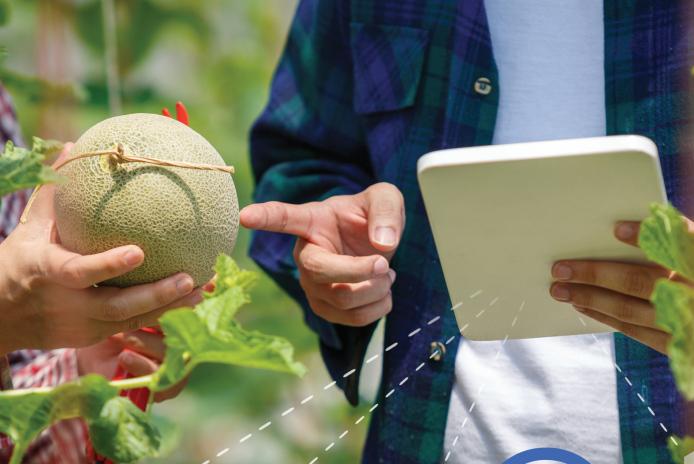
AI solutions for Taiwan industries. Currently, the Taiwan AI Action Plan has been integrated with DIGI+.
Smart agriculture policies
These policies focus mainly on the agricultural sector, helping it to upgrade itself through the promotion of smart technologies. The policies that are included in this category are:
• Agriculture Productivity 4.0: The goal is to enhance agricultural protectivity through three key strategies including the development of smart biological and agricultural sensing systems; smart service and support systems and promotion of new communication models between farmers and customers.
• New Agricultural Innovation Promotion Scheme: This programme aims to address three issues namely, protecting farmers’ livelihoods, ensuring safety of agricultural production and enhancing marketing ability.
• Smart Agriculture 4.0: The main purpose of this policy is to develop core technologies for agricultural upgrading; integrate existing technologies to build up smart equipment and human-machine aids; establish bio-sensing monitoring models and IoT-based production and sales platforms; encourage agricultural as well as other industries to invest in the development of smart agriculture applications; provide marketing and sales guidance to the targeted industries; and set up demonstration sites to serve as exemplars.
• Smart agriculture practices: A threeyear survey conducted in 2015, targeted 10 agri businesses in Taiwan. Results from the survey found that agri businesses in the region were more likely to adopt more digital and automated techniques to improve their production and manage their businesses, which is compatible with the smart agricultural formation framework promoted by the government.
Although efforts by the government have managed to attract the attention of farmers, getting them to fully engage in smart agriculture practices is not easy, since older farmers find it hard to learn new technologies. Taiwan’s journey on SAT is therefore ongoing. However, the region’s experience in promoting smart agriculture practices shed light on the readiness for smart agricultural transformation. ■
FAR EASTERN AGRICULTURE • Issue Two 2024 TECHNOLOGY
21 www.fareasternagriculture.com Image Credit: Adobe Stock Agricultural policies in Taiwan are often implemented using a top-down approach, originating from higher levels and proceeding downwards.
AGENDA
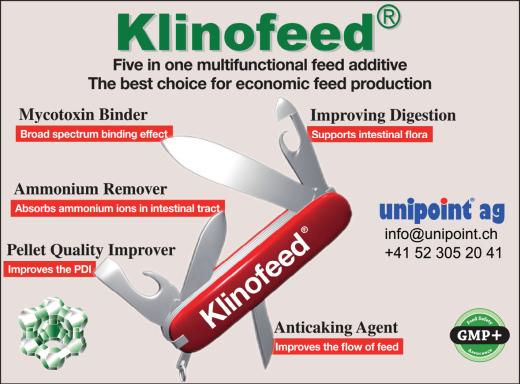
Berry's technology breaks ground in PE Cling Film
A NEW WHITE paper from Berry Global outlines the solution to finding an alternative to traditional polyvinyl chloride (PVC) cling films for fresh food applications. The whitepaper titled: 'How Omni Xtra+ Can Drive More Recycling of Cling Films,' details the challenges that users of PVC cling films now face owing to its inability to be widely recycled and how the development work behind Berry’s new Omni Xtra+ polyethylene (PE) version has created a film with a comparable performance to PVC, and which can also be recycled. Key to the development of OminXtra+ was to develop a recyclable PE film via both kerbside and front-of-store PE waste streams that combined strength, stretchability, and excellent clarity and resistance to puncturing.
For details of advertising in the
Reader Information Service Subscription form
Issue 2 2024
This is a free service, readers who wish to receive urgently further information about any product or company featured in the magazine, please complete this form and fax to: Far Eastern Agriculture on +44 (0) 20 7973 0076 or e-mail to: feag@alaincharles.com or post to: Far Eastern Agriculture, University House, 11-13 Lower Grosvenor Place, London, SW1W 0EX, United Kingdom.
Enclosed is my cheque/ draft for (Cheques made payable to Alain Charles Publishing Ltd) Please invoice Please charge to Visa/American Express/Mastercard (please circle) Card number
22 www.fareasternagriculture.com FAR EASTERN AGRICULTURE • Issue Two 2024
Name: Job title: Company: Address: Tel: Fax:
organization’s
Number
Signature: Date:
Your
product/ service:
of employees in your organization:
Name of product and/or company Page No. I wish to subscribe to Far Eastern Agriculture for 1 year (6 issues) starting with the next copy. Surface Rates: 1 year: £57 US$111 Euro e93 2 years: £97 US$189 Euro e158 3 years: £129 US$251 Euro e210
Expiry Date / (please note we debit your account in sterling) Name Position Organization Address Country E-mail Signed Date Send this form together with your remittance to: Far Eastern Agriculture, University House, 11-13 Lower Grosvenor Place, London, SW1W 0EX, UK. Tel: +44 (0) 20 7834 7676 Fax: +44 (0) 20 7973 0076 Subscription order can also be made via the Internet: www.alaincharles.com or email at feag@alaincharles.com Please TICK most relevant box 4. Type of produce Government: municipal services, diplomatic, (UN, International Agencies) Educational/Research Institutes Commercial Services: banking, finance, insurance Import/Export Agents and Distributors Farms and Plantations Food Processing: poultry, dairy, cereal, fruit, vegetables, etc Aid Organizations Agricultural Equipment and Material Manufacturers: irrigation, agro-chemicals Others: please specify: 01 03 06 08 09 11 12 13 16 01 02 03 04 05 06 07 08 09 10 11 12 13 14 15 16 17 18 19 20 Rice Grain Fruit Cocoa Coffee Cotton Rubber Palm Oil Palm Kernels Sugar Cane Feedstuffs Groundnuts Vegetables Cassava Dairy Cattle Beef Cattle Sheep/Goats Pigs Poultry Fisheries
# LONDON OFFICE: University House, 11-13 Lower Grosvenor Place, London SW1W 0EX, UK Tel: +44 (0) 20 7834 7676 Fax: +44 (0) 20 7973 0076 E-mail: post@alaincharles.com Web: www.alaincharles.com ADVERTISE HERE!
classified section please contact:
Measuring and tackling on-farm food loss
A new tool developed by the WWF and CGF offers a simplified approach to help farmers and their buyers identify and address the cause of their on-farm food loss.

WWF IN PARTNERSHIP with the Consumer Goods Forum (CGF), has launched the new Global Farm Loss tool, enabling growers of all sizes to measure and report on-farm food loss with ease and accuracy.
By providing actionable insights, the tool enables growers and buyers to map their current loss levels and develop new channels to utilise more of what is grown. The tool— which can be used for all crops, particularly fruits, vegetables and tree nuts—is capable of estimating the surplus left behind in-field post-harvest and at further stages across a farm’s operations. Apart from being userfriendly, the platform provides a simplified approach to help farmers and their buyers identify and address the cause of their onfarm food loss and its associated impacts, such as scope 3 emissions.
“We need visibility to identify food loss hotspots and understand the reason behind them,” said senior director of Food Loss and Waste at WWF, Pete Pearson. “The Global Farm Loss Tool is designed to
be part of that solution, helping fill the crucial gap of tracking primary and actionable food loss data at the farm level of global supply chains.”
With adequate support from the CGF, the tool has also been beta tested through the Food Waste Coalition, which is closely aligned with the United Nations Sustainable Development Goal (SDG) 12.3 and aims to halve global food loss and waste by 2030.
Working with Coalition members, the CGF and WWF will continue to assess the impact of the new tool, reviewing how to improve the tool’s user experience, expand
The tool is capable of estimating the surplus left behind in-field post-harvest and at further stages across a farm’s operations.
its utility in the field and for more food types across the global supply chain, and promote its usage to new growers and suppliers.
Director of Health and Sustainability at the CGF, Sharon Bligh highlighted the importance of growers in ensuring the sustainability of a food system.
“The CGF is committed to supporting our members to help growers in their supply chains to track, address and ultimately reduce the footprint of agriculture. This data is essential for accelerating our transition to a more efficient and circular food system,” said Bligh.
The Global Farm Loss Tool is compatible with existing reporting programmes, including World Resources Institute’s (WRI) and the United Nations Food and Agriculture Organisation’s Food Loss Index, among others.
It is now available free of charge to growers and farmers worldwide at: https://www.globalfarmlosstool.org/
FAR EASTERN AGRICULTURE • Issue Two 2024 TECHNOLOGY 23
www.fareasternagriculture.com
Image Credit: Adobe Stock
Research from WWF and Tesco shows that around 15% of all food produced, is lost on farms during, around and after harvest worldwide annually.
